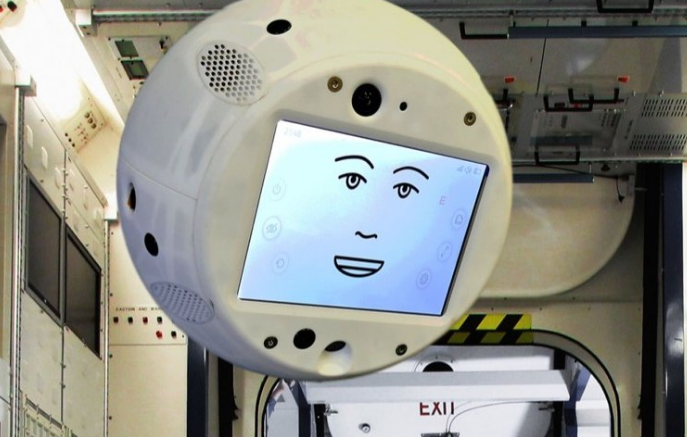Airbus and NASA Are Sending A Robot Head To The International Space Station
I cover a lot of interesting new technology for use in space, but I have to admit that the device I am blogging about today looks and sounds like something out of a sci-fi comedy. Airbus and IBM are collaborating on what is being called CIMON which stands for Crew Interactive MObile CompanioN. It is a floating robot about the size of a medicine ball which is equipped with a IBM’s Watson AI system. CIMON weights about eleven pounds. It will use an air-propulsion system to move around in the microgravity of the ISS.
Watson is a computer system that can answer questions present in natural language. It was built by IBM to apply advanced natural language processing, information retrieval, knowledge representation, automated reasoning, and machine learning technologies to the field of open domain question answering. Watson beat human champions at the TV game of Jeopardy in 2011. In 2013, IBM announced the first commercial application of Watson. This application was to help physicians at Memorial Sloan Kettering Cancer Center, New York City, make decisions in lung cancer cases.
Later this year, CIMON will be sent to the International Space Station (ISS) to assist astronauts. CIMON will make use of its neural network artificial intelligence system in combination with face and voice recognition to assist astronauts working on the European Space Agency’s Horizons mission between June and October 2018. It is hoped that CIMON will not only improve the efficiency of astronauts but also reduce their stress. Cimon will also warn astronauts immediately of any technical problems which should help improve safety aboard the ISS.
A full-sized display on the side of CIMON will show a robot face. Along with other features such as face and voice recognition, it is hoped that that astronauts will come to consider CIMON as another crew member. The chief IBM Watson architect said “CIMON’s digital face, voice and use of artificial intelligence will make it a ‘colleague’ to the crew members. This collegial ‘working relationship’ facilitates how astronauts work through their prescribed checklists of experiments, now entering into a genuine dialogue with their interactive assistant.”
There have been other robots on the ISS before CIMON. In 2011, NASA sent a robot named Robonaut which was built by Dextrous Robotics Laboratory at NASA's Lyndon B. Johnson Space Center and sent to the ISS. Robonaut is a humanoid robot that was intended to carry out simple tasks aboard the ISS. Unfortunately, technical problems have resulted in it being mostly out of action since 2015. As a matter of fact, it has been packaged up for return to Earth for repairs.
Another robot called Kirobo was built by Toyota, Dentsu (a Japanese advertising agency) and the Japan Aerospace Exploration Agency. Kirobo is thirteen inches tall and weighs about two pounds. It accepted vocal commands to assist the Japanese astronaut Wakata Koichi at the ISS until 2015.
The previous robots were not very intelligence and were intended to use tools to help the astronauts. CIMON is unique because it is using advanced artificial intelligence to assist the astronauts with information access and decision making.
CIMON:
